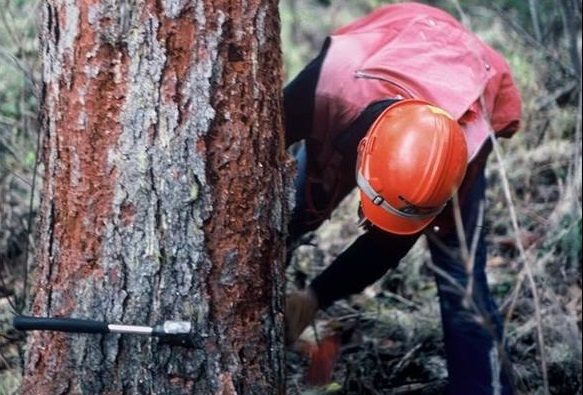The Forest Practices Board has found the BC Government has not been properly monitoring licensees’ harvesting of spruce bark beetle infested stands of trees.
Companies like Canfor and BC Timber Sales (BCTS) have been instructed to target areas infested with spruce bark beetle to help limit the spread and knock down already dead trees.
In March 2021, the board received a complaint from members of the public in the Prince George area regarding these companies harvesting practices.
Gerry Grant, a Forest Practices Board member, said “our investigation found that Canfor and BCTS are making progress in harvesting infested and dead spruce trees, but the complainant’s concerns are still valid.”
The investigation did not find issues with the companies harvesting practices, but did find that the Ministry of Forests has not regularly monitored its licensees to see how much infested wood might or might not be harvested.
“The ministry had done some monitoring of performance and some public reporting, but not in a consistent fashion so that in one year to the next the public could look at the output, the monitoring, and the results” Grant told My PG Now.
Grant says spruce bark beetle are more complex than the pine beetle, and in some ways they could be as serious.
“The pine beetle largely wiped out the mature pine, so the pine is gone and now what’s left is the spruce stands,” Grant said, adding that spruce trees are “our economic future.”
He says spruce bark beetle are harder to find than the pine beetle, which turned pine needles on trees a bright red.
“The needles sometimes fall of really quickly, and it is hard to find population centers,” where the pine beetle spread like a wave, spruce beetle tend to pop up and disappear more randomly, he said.
One positive is that spruce beetle usually only attack 20-40% of trees in a stand, but a negative is that climate change is almost doubling the rate of spruce bark beetle’s reproductive cycle.
“Historically, it takes two years from the eggs being laid until a mature beetle growing and laying another set of eggs. With the warmer summers, the beetle has been maturing and living on a one year cycle, it is a more exponentially steep population growth.”
Grant said cold snaps in the winter, long periods at -30 to -40 largely contributes to keeping down spruce beetles’ population levels, temperatures we have not been seeing nearly as often.
“It is really important to monitor what the licensees are doing, and monitor the Ministry’s own performance in managing the beetle so the public can be aware of the issue and be satisfied that a good job is being done, or demand accountability. It is an important issue.”
For more information on the forest practices board, click here.
Something going on in the Nechako Valley area you think people should know about?
Send us a news tip by emailing [email protected].





